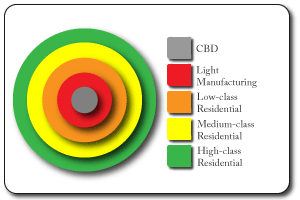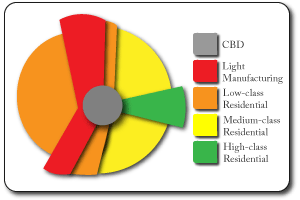Migration is the movement of people from one place to another (BBC, 2013) so what is urbanisation?
 The term 'urbanisation' refers to the growth of an urban area which results in an increase in the percentage of the population living in towns or cities. There are two main reasons urbanisation occurs, these are called PUSH and PULL factors.
The term 'urbanisation' refers to the growth of an urban area which results in an increase in the percentage of the population living in towns or cities. There are two main reasons urbanisation occurs, these are called PUSH and PULL factors.Push Factors (of rural area's)
- Advancement of mechanical goods within agriculture means there is less demand for manual labour (farming).
- Lack of higher education
- Travelling distance - Long distance to hospitals, police, shops and work
- Poor infrastructure - Running water, reliable electricity and road surfaces.
 |
| People running from old thatched housing to 'shiny urban world' |
Pull Factors (of urban areas)
- Leisure services (restaurants, shopping centres & nightclubs)
- Universities, colleges and hospitals
- Wide range of job opportunities
with higher wages
Activity: Using the picture found in the link below, students should list as many push and pull factors they can think of. To differentiate higher ability students should seperate factors on whether they PUSH from rural to urban or urban to rural. Can students already draw ideas about counter-urbanisation? This would provide link to following lesson on counter-urbanisation.
Worksheet link: https://encrypted-tbn1.gstatic.com/images?q=tbn:ANd9GcQhmUAawdArkkvQqjM8QYU_16DNnKSqxlla08HDr66udc8QZc4s8A
Activity: Using the graph linked below, students should answer the following questions:
- Describe the graph in detail using the key.
- Can you identify which is the most urbanised?
- Is urbanisation increasing, decreasing or staying the same
- Which one has the highest rate of urbanisation?
Higher ability students should start to think of reasons why the figures differ from one another.












